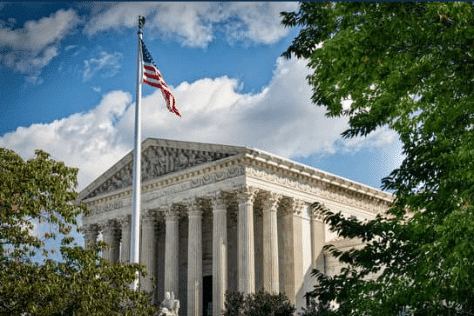Table Of Contents
Skin Cancer in the Military
Skin cancer is not always the first thing people think about when looking at the health risks associated with military service. However, studies show that active duty military and veterans have an increased risk for skin cancer compared to the general population.
U.S military members are often deployed to tropical areas where the suns UV rays are brighter and reflect off of sand and water or are more intense at higher altitudes. Military members also go through outdoor training and work in environments with prolonged exposure to the sun’s harmful UV rays. Further, veterans who fought in Vietnam typically were not warned about the risks of sun exposure.
Key Findings on Skin Cancer Risks for Veterans and Military
A report published by the Journal of the American Academy of Dermatology in 2018 included nine published studies on military service and skin cancer. Some of the key findings included:
- The increased risk applied to both active duty service members and veterans.
- Four of the nine studies were specific to melanoma, the deadliest form of skin cancer.
- The military’s demographics include two groups known to have high rates of skin cancer: Caucasians and men over 50.
- There is a correlation between service in tropical environments and increased incidence of both melanoma and non-melanoma skin cancer.
- World War II soldiers who served in the Pacific had a high rate of skin cancer, as well as people who served in the tropic, like Panama.
- The Air Force has the highest rate in both melanoma and non-melanoma skin cancer.
- Officers, especially older officers, had an increased rate of melanoma and non-melanoma skin cancers than enlisted personnel.
- Broken down by job description, pilots have the greatest incidence of skin cancer compared with service warfare officers who spend time onboard ships.
- People who are in mechanized units and work with tanks have the lowest incidence of skin cancer.
Overall the studies attributed the highest incidence of cancer to increased sun exposure during military service and lack of adequate sun protection. Both of which increase one’s risk for melanoma and non-melanoma skin cancer.
The Reality of Sun Exposure for Military Personnel
In an interview for skincancer.org, Dr. Jonathan Bingham, a flight surgeon who served in Operation Iraqi Freedom, discussed the reality of sun exposure for military personnel.
Sunscreen was not routinely or commonly issued by the military and photosensitivity is a common side effect of many of the medications, including anti-malarial medications, which service members were given.
Bingham also discussed that levels of UV radiation increase by 24 percent for each 1,000 meter increase in altitude. This means that military members stationed in higher elevations, near the equator, on water, or serving in the air, mountains, and artic conditions were more prone to sun exposure and at risk for skin cancers.
Unfortunately for many service members applying and using sunscreen is not a top priority, and is not available. According to the JAAD review, the application of sun screen is often impractical and mandatory sun protection has not historically be ordered by the military. Further, other skin cancer prevention methods, like wearing protective clothing and hats, are not always practical during training and deployment as excessive heat can make it difficult and dangerous to wear heavy clothing.
What is Skin Cancer?
There are three major types of skin cancer: basal cell carcinoma, squamous cell carcinoma, and melanoma.
Skin cancer develops primarily on areas of sun-exposed skin including the scalp, face, lips, ears, neck, chest, arms and hands, and legs. But it can also form on areas that are not prone to sun exposure such as palms, beneath fingernails or toenails, and genitals.
Basal Cell Carcinoma Signs and Symptoms
Basal cell carcinoma usually occurs in sun-exposed areas of the body such as the neck or face. Basal cell carcinoma may appear as:
- A pearly or waxy bump
- A flat, flesh colored or brown scar-like lesion
- A bleeding or scabbing sore that heals and returns
Squamous Cell Carcinoma Signs and Symptoms
Typically squamous cell carcinoma occurs on sun-exposed areas of the body such as the face, ears, and hands. However, people with darker sin are more likely to develop squamous cell carcinoma on areas that aren’t often exposed to the sun.
Squamous cell carcinoma may appear as:
- A firm, red nodule
- A flat lesion with a scaly, crusted surface
Melanoma Signs and Symptoms
Melanoma can develop anywhere on the body. Melanoma often appears on the face or the trunk of affected men. In women, melanoma often develops on the lower legs. Melanoma signs include:
- A large brownish sport with darker speckles
- A mole that changes in color, size or feel that bleeds
- A small lesion with an irregular border and portions that appear red, pink, white, blue, or blue-black
- A painful lesion that itches or burns
- Dark lesions on palms, soles, fingertips or toes, or on mucous membranes lining the mouth, nose, vagina, or anus
How is Skin Cancer Rated?
The VA rates skin cancer under three different codes:
- Benign Tumors. Benign tumors are rated either on scars/disfigurement or how they affect the functioning of a body part. Most Basal Cell Cancers fall under this category.
- Malignant Melanoma. If it is active and requires intensive therapy, invasive treatments like chemotherapy, extensive surgery, or x-ray therapy it is rated 100% starting at the beginning of treatment. This rating will continue for the first 6 months following the completion of the treatment. The condition will then be re-evaluated and rated based on any continuing symptoms, like scarring.
- All Other Malignant Cancers. All other malignant skin cancers are rated under this code. If it is active and requires intensive, invasive treatments like chemotherapy, extensive therapy, or x-ray therapy, it is rated 100% starting at the beginning of treatment. This rating will continue for the first 6 months following the completion of the treatment. The condition will then be re-evaluated and rated based on any continuing symptom, like scarring. Most squamous cell cancers fit in this category.
Veterans Help Group have been supporting veterans in getting the benefits they deserve since 1995. If you or a loved one served, and suffer from skin cancer, we are here to help. Call Veterans Help Group at 855-855-8992 or complete our free veterans benefits case evaluation form.

What are Effective Dates of VA Disability Claims and Why Do They Matter?
What are Effective Dates of VA Disability Claims and Why Do They Matter? In simple terms, the...

What is Pes Planus and How Is It Rated?
What is Pes Planus and How Is It Rated? Pes Planus (Flat Feet) VA Disability: Ratings, Symptoms,...

Are Disabled Veterans Eligible for TRICARE?
Are Disabled Veterans Eligible for TRICARE? Simply being a disabled veteran doesn’t necessarily...





